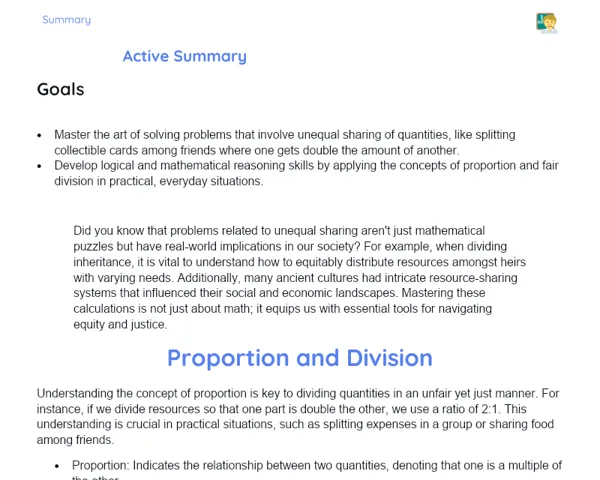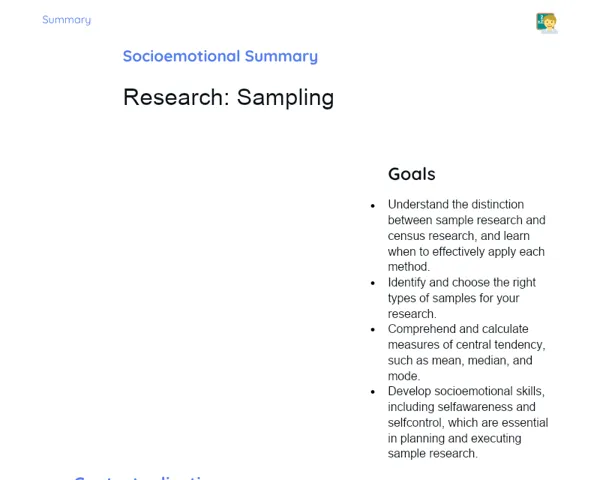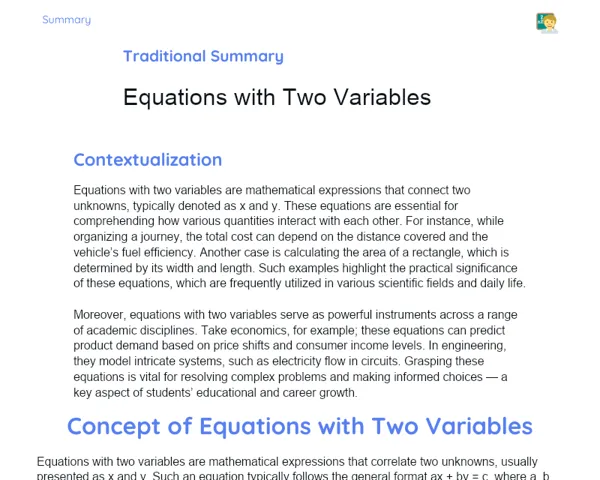Objectives
1. 🎯 Understand and apply the direct rule of three to solve real-life problems, especially in cases involving proportions like fuel consumption and distances covered.
2. 🎯 Develop skills in calculation and logical reasoning by using practical math in daily situations.
3. 🎯 Enhance the ability to work collaboratively in groups, discussing and sharing insights to arrive at common solutions.
Contextualization
Did you know that the rule of three is one of the oldest mathematical tools known to mankind? It was used by ancient civilizations like the Egyptians to fairly divide land after the floods of the Nile. Even today, this technique remains crucial, aiding everything from trip planning to efficient expense management. What we are learning now has roots that stretch back thousands of years!
Important Topics
Direct Proportionality
Direct proportionality forms the essence of the direct rule of three. When two quantities are directly proportional, an increase in one leads to a proportional increase in the other. For instance, if a vehicle uses more fuel as the distance it covers increases, these two quantities (distance and fuel consumption) are directly proportional.
-
Vital for understanding how related variables influence each other.
-
Key for solving everyday issues, like calculating fuel expenses during trips.
-
Serves as a foundation for exploring other types of proportions, such as inverse proportion.
Setting up the Equation
When using the direct rule of three, it is essential to set up the equation correctly. This means aligning the proportional quantities so a clear path of reasoning can be followed. For example, if you have 10 km covered with 1 liter of fuel, and you want to know how many liters are needed for 100 km, you align the kilometers with the corresponding liters.
-
Encourages logical and mathematical understanding, crucial for applied mathematics.
-
Helps visualize and organize data from complex problems, making resolution easier.
-
Is the first step for any rule of three problem and is fundamental for achieving successful outcomes.
Solving and Verifying
After forming the equation, the next step is to solve the rule of three to get the desired answer. Once the solution is found, it’s important to check if the result makes sense in the context of the problem, ensuring that no calculation or interpretation errors were made.
-
Enhances calculation skills and mathematical accuracy.
-
Teaches the significance of reviewing and validating results, a valuable skill across all fields of knowledge.
-
Empowers students to think critically and analytically about the solutions they find.
Key Terms
-
Direct Rule of Three: A mathematical method used for solving problems involving proportionality between two quantities. If one quantity increases, the other increases in the same ratio.
-
Proportionality: A consistent relationship or ratio between quantities. In the context of the rule of three, it refers to direct proportionality where an increase in one quantity results in a proportional increase in another.
-
Equation: A mathematical statement asserting that two expressions are equal. In the rule of three, the equation is used to establish the proportional relationship and solve the problem.
For Reflection
-
How can the application of the direct rule of three assist you in your daily life? Think of examples beyond those we discussed in class.
-
Why is it crucial to verify the solution of a mathematical problem? Discuss the importance of this step.
-
In what ways can understanding proportionality be useful in other subjects or situations?
Important Conclusions
-
Today, we delved into the direct rule of three, an essential mathematical tool that aids us in solving practical daily challenges, such as calculating fuel consumption during travels or managing expenses effectively.
-
We learned to establish proportions and set up equations to tackle these problems, as well as the importance of verifying our answers for accuracy.
-
We discussed how this skill not only enhances our logical and mathematical reasoning but also prepares us to make well-informed decisions in various daily scenarios.
To Exercise Knowledge
Keep a logbook for a week, noting down your family's car fuel consumption and the kilometers driven. Use the rule of three to anticipate monthly fuel needs. Research prices of different products in varying quantities and calculate which one offers the best bang for your buck using the rule of three. Organize a hypothetical party and calculate the amount of food and drink needed based on the guest count, using the rule of three to adjust quantities.
Challenge
Supermarket Challenge: With a fictional budget, plan a shopping list for a month. Use the rule of three to adjust quantities according to prices and deals available, maximizing the number of items you can buy without going over budget.
Study Tips
-
Practice the rule of three in everyday situations, such as modifying cooking recipes for different numbers of people.
-
Utilize math apps or educational websites to tackle interactive rule of three problems and test your skills with immediate feedback.
-
Create flashcards with various rule of three problems and their solutions for regular review and practice.



